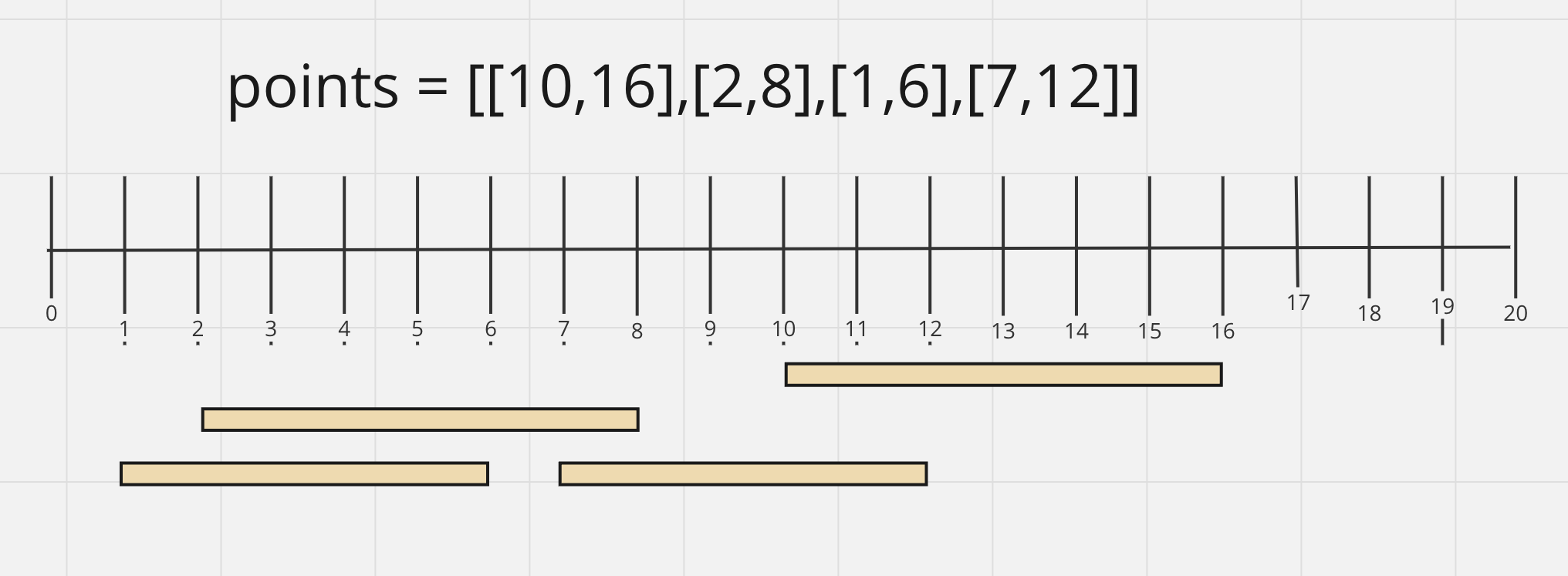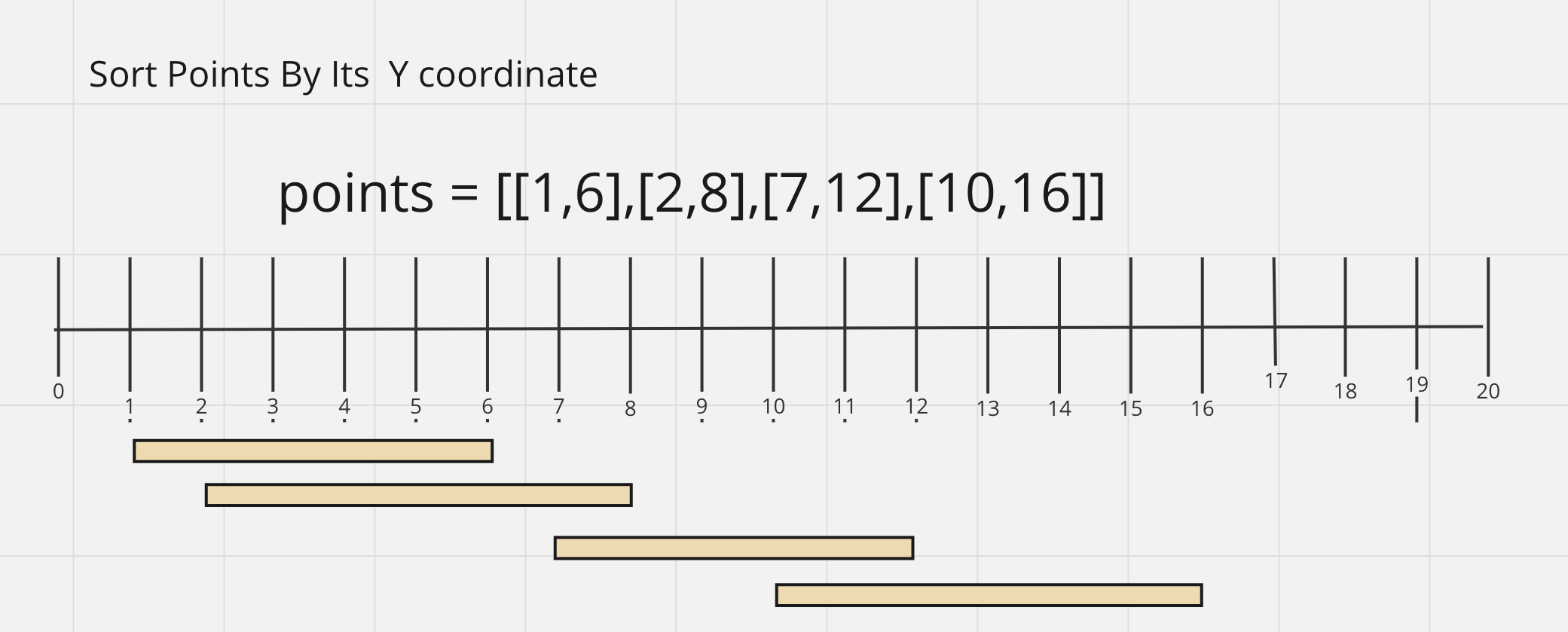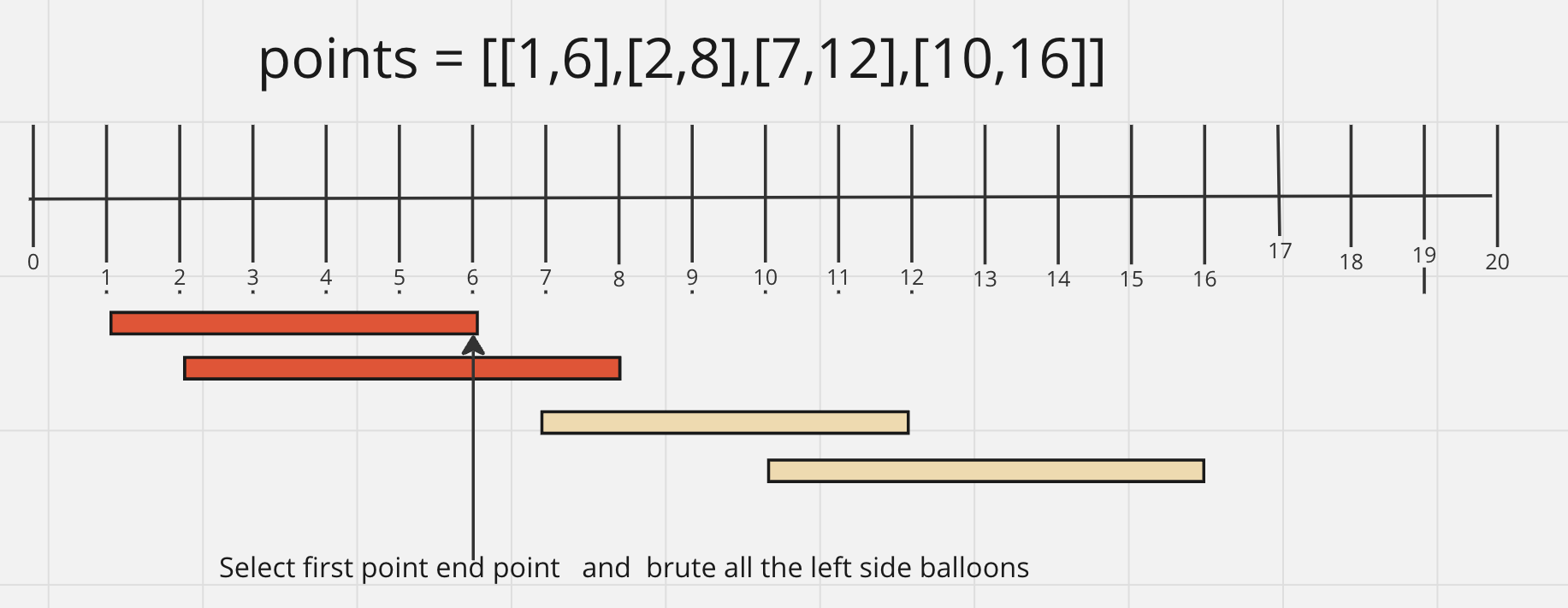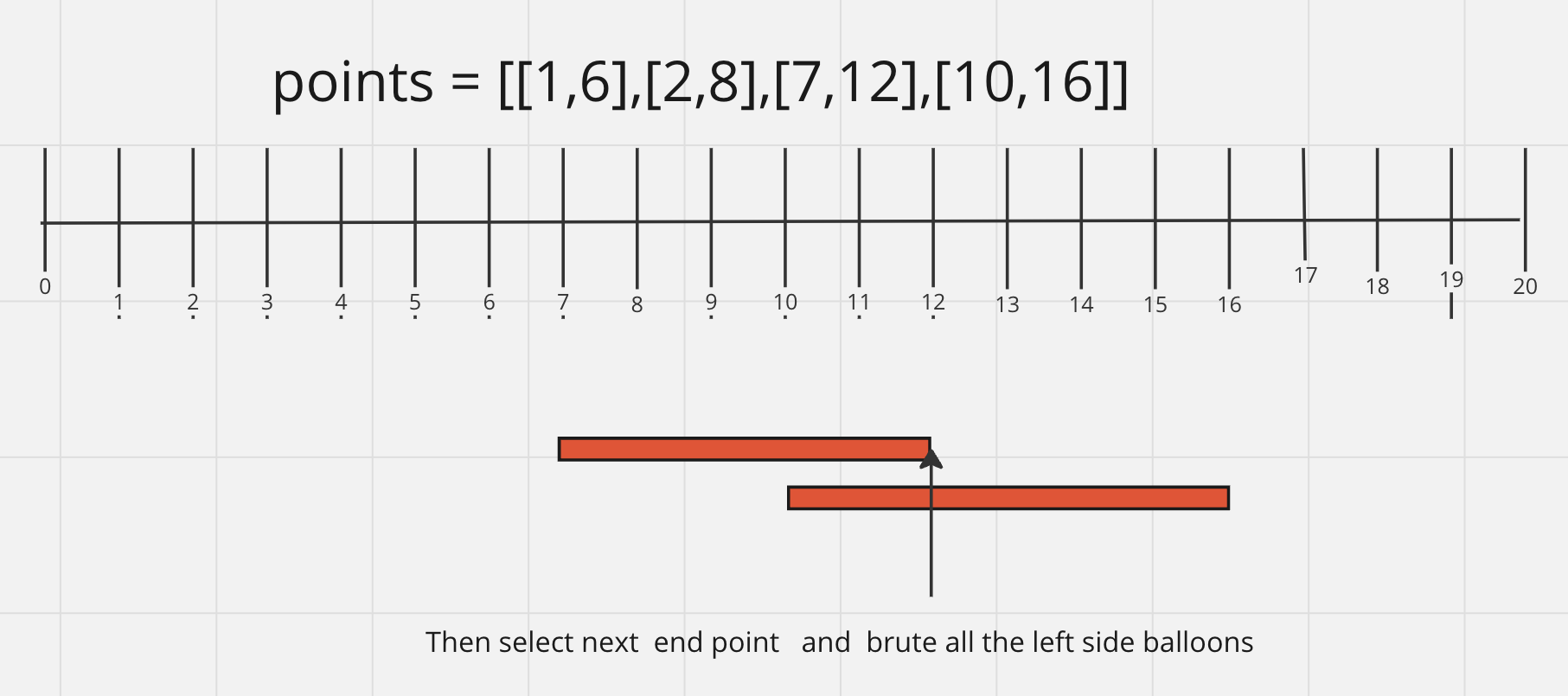452. Minimum Number of Arrows to Burst Balloons
Description
There are some spherical balloons taped onto a flat wall that represents the
XY-plane. The balloons are represented as a 2D integer array points where
points[i] = [xstart, xend] denotes a balloon whose horizontal diameter
stretches between xstart and xend. You do not know the exact y-coordinates
of the balloons.
Arrows can be shot up directly vertically (in the positive y-direction) from different points along the x-axis. A balloon with xstart and xend is burst by an arrow shot at x if xstart <= x <= xend. There is no limit to the number of arrows that can be shot. A shot arrow keeps traveling up infinitely, bursting any balloons in its path.
Given the array points, return the minimum number of arrows that must be
shot to burst all balloons.
Example
points = [[10,16],[2,8],[1,6],[7,12]]
- Shoot an arrow at x = 6, bursting the balloons [2,8] and [1,6].
- Shoot an arrow at x = 11, bursting the balloons [10,16] and [7,12]
The balloons can be burst by 2 arrows:
Intuition
- There are several
segmentson the one-dimensional coordinate axis, find out theminimumnumber of arrows which are orthogonal to the coordinate axis so that each segment can be shot through by at least onearrow.
Approaches
Using Sorting
-
Given points

-
Sort the segments by the end

sort(points.begin(), points.end(), [&](auto &x, auto &y) { return x[1] < y[1]; }); -
Put an arrow at the end of the
1-stsegment
-
From the
2-ndsegment, we check whether the current arrow pass through the currentsegment, if not add an arrow, put it at the end of the current segment
Time Complexity
O(N * log(N))where 'N' is points length
Space Complexity
O(1)
Code
class Solution {
public:
int findMinArrowShots(vector<vector<int>>& points) {
sort(points.begin(), points.end(), [&](auto &x, auto &y) {
return x[1] < y[1];
});
int n = points.size(), ans = 1, max = points[0][1];
for(int i = 1; i < n; i++) {
if(points[i][0] > max) {
ans++;
max = points[i][1];
}
}
return ans;
}
};Analysis
